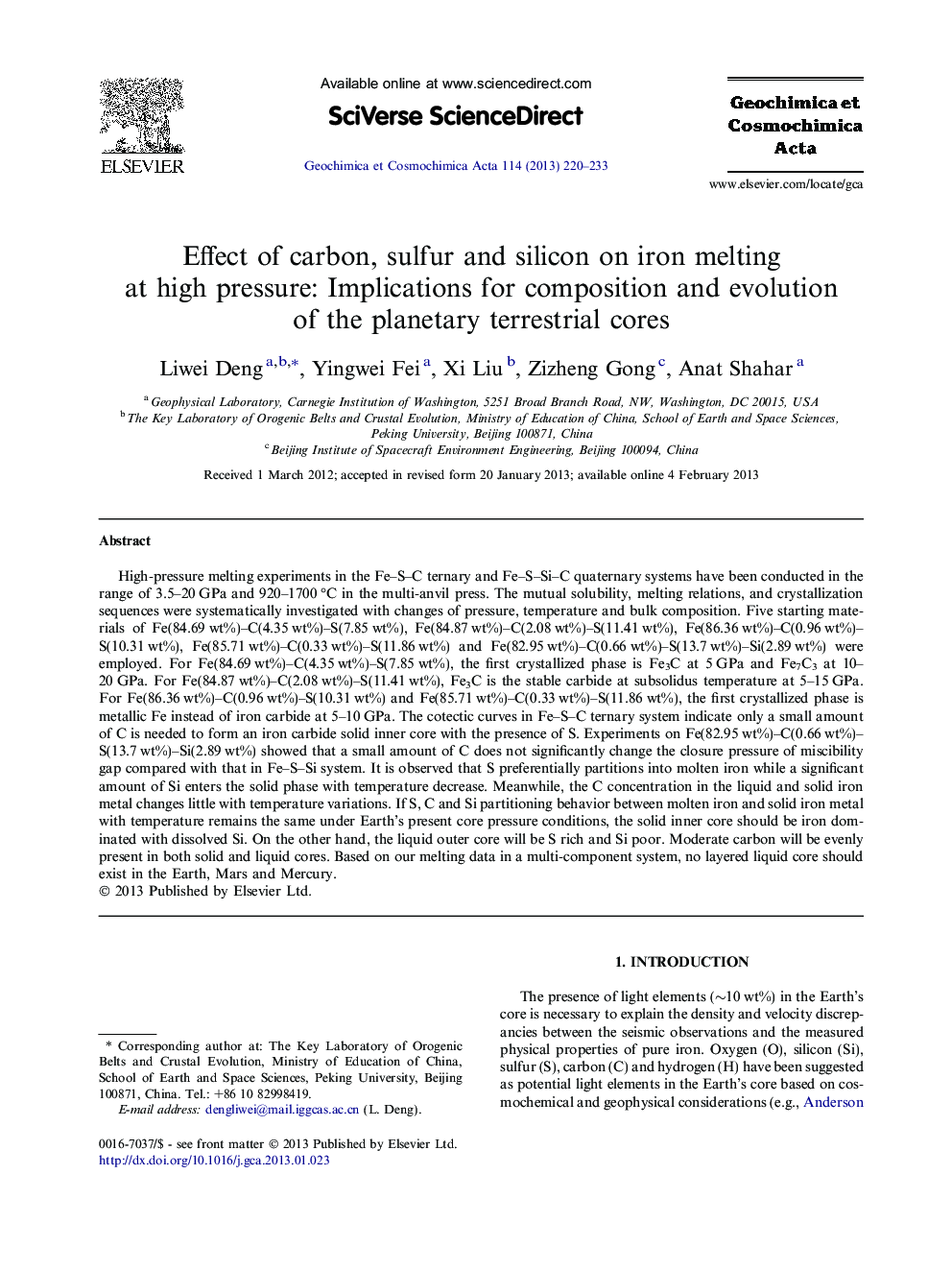| Article ID | Journal | Published Year | Pages | File Type |
|---|---|---|---|---|
| 4702293 | Geochimica et Cosmochimica Acta | 2013 | 14 Pages |
High-pressure melting experiments in the Fe–S–C ternary and Fe–S–Si–C quaternary systems have been conducted in the range of 3.5–20 GPa and 920–1700 °C in the multi-anvil press. The mutual solubility, melting relations, and crystallization sequences were systematically investigated with changes of pressure, temperature and bulk composition. Five starting materials of Fe(84.69 wt%)–C(4.35 wt%)–S(7.85 wt%), Fe(84.87 wt%)–C(2.08 wt%)–S(11.41 wt%), Fe(86.36 wt%)–C(0.96 wt%)–S(10.31 wt%), Fe(85.71 wt%)–C(0.33 wt%)–S(11.86 wt%) and Fe(82.95 wt%)–C(0.66 wt%)–S(13.7 wt%)–Si(2.89 wt%) were employed. For Fe(84.69 wt%)–C(4.35 wt%)–S(7.85 wt%), the first crystallized phase is Fe3C at 5 GPa and Fe7C3 at 10–20 GPa. For Fe(84.87 wt%)–C(2.08 wt%)–S(11.41 wt%), Fe3C is the stable carbide at subsolidus temperature at 5–15 GPa. For Fe(86.36 wt%)–C(0.96 wt%)–S(10.31 wt%) and Fe(85.71 wt%)–C(0.33 wt%)–S(11.86 wt%), the first crystallized phase is metallic Fe instead of iron carbide at 5–10 GPa. The cotectic curves in Fe–S–C ternary system indicate only a small amount of C is needed to form an iron carbide solid inner core with the presence of S. Experiments on Fe(82.95 wt%)–C(0.66 wt%)–S(13.7 wt%)–Si(2.89 wt%) showed that a small amount of C does not significantly change the closure pressure of miscibility gap compared with that in Fe–S–Si system. It is observed that S preferentially partitions into molten iron while a significant amount of Si enters the solid phase with temperature decrease. Meanwhile, the C concentration in the liquid and solid iron metal changes little with temperature variations. If S, C and Si partitioning behavior between molten iron and solid iron metal with temperature remains the same under Earth’s present core pressure conditions, the solid inner core should be iron dominated with dissolved Si. On the other hand, the liquid outer core will be S rich and Si poor. Moderate carbon will be evenly present in both solid and liquid cores. Based on our melting data in a multi-component system, no layered liquid core should exist in the Earth, Mars and Mercury.
